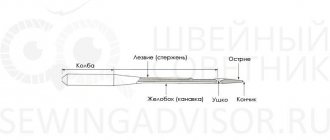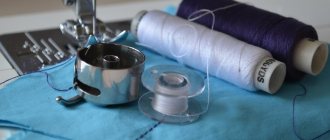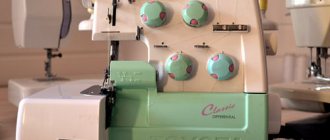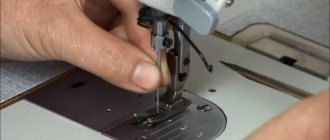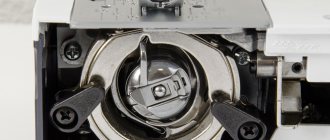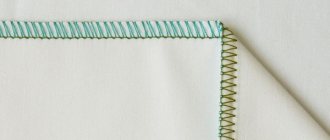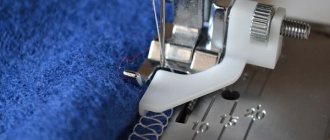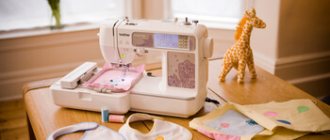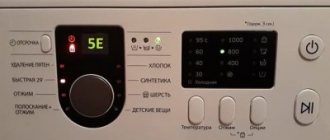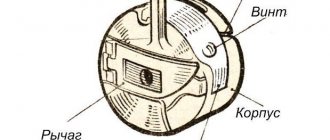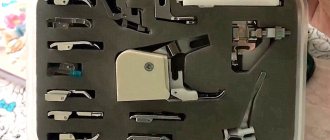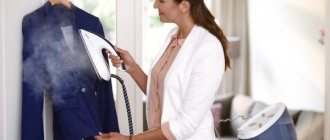The twin needle can be installed in any sewing machine that performs zigzag stitching. The main thing you should pay attention to before buying a double needle is the width of the hole (slot) of the needle plate and the distance between the needles.
How to sew, and how to use a double needle, how to thread two needles at the same time? The threads are threaded in the same way as with one needle, only instead of one spool, two will be used. And both threads will go through the same upper thread tensioner.
In this video you will clearly see how to make decorative double stitches using a double needle, as well as how to hem knitwear using a double needle and sew braid to knitted fabric.
Using a twin needle increases the capabilities of your machine and makes finishing double stitches easier. In addition, when sewing knitwear, you can imitate the stitching of a flat-stitch machine. But most often, a double needle is indispensable when sewing clothes that have double stitching. Decorative finishing stitches on jeans, patch pockets, details of men's shirts, etc. You can stitch evenly and neatly by making just one seam with a double needle.
How to use a twin needle
How to use a double needle? Just like with a regular needle, however, you need to correctly thread both upper threads and be sure to loosen the tension of the lower one (in the bobbin). The lower thread in the bobbin will be simultaneously used by two upper threads, “folding out” between them in a zigzag and therefore it must be loosened. You also need to loosen the tension on the upper threads, otherwise the stitching will tighten and even break. Be sure to adjust the tension of all threads well, and use elastic and thin threads whenever possible. And do not forget that in order to form a high-quality stitch, the bottom thread must be “number” thinner.
How to install double needle?
When installing, you must adhere to the following algorithm of actions:
- By rotating the flywheel you need to fix the needle holder at the top point;
- The device's foot lowers;
- If a regular needle is installed in the latch, it can be pulled out; to do this, just loosen the fastening screw;
- The double needle is turned with the plane part “away from you” and inserted into the needle holder until the edge of the flask begins to come into contact with the restrictive element;
- The fixing screw is tightened. To prevent the needle from falling out at this moment, you can carefully hold it with your left hand, while turning the screw with your right hand.
Twin needles are not suitable for all sewing machines.
Twin needles can only be used on machines that have a zigzag stitch. Straight-stitch sewing machines of the Podolsk type, as in this photo, are not designed for such needles. The needle plate of such machines has one round hole, and to use a double needle, a narrow and wide slot is required, which is also necessary for performing zigzag stitching. In addition, additional thread guides and a stand for the second spool are required. If you are going to install a twin needle in your Seagull sewing machine, pay attention to how the needle fits into the hole in the needle plate when it sews a straight stitch. The needle must pass exactly in the center of the needle hole. If there is an offset from the center, the double needle may break.
How do twin needles work?
Structurally, a double needle consists of the following elements:
- Two standard sewing needles designed for stitching on a household machine.
- Holder housing. Most often it is made of plastic. This element holds the double needles together into a single structure.
- Flask. Designed for installing double needles into the needle holder of a sewing machine.
The double needle can be used in any sewing machine with a zigzag function. In their foot and needle plate there is an oblong slot necessary for the free movement of two needles.
Installing a twin needle and threading
A double needle is installed in any sewing machine, just like a regular needle. The flat of the needle (cut) should be directed back (away from you), and the round side of the needle flask should be directed towards you. The threads from the spools are passed together through all the thread guides, including the upper thread tensioner, and only the lowest thread guides (at the base of the needle) separate them. The left thread is threaded into the left needle, the right thread into the right needle. If there is only one lower thread guide (like Chaika’s), then the left thread is passed through the thread guide, and the right thread is passed next to it, threaded directly into the eye of the right needle.
How to thread a twin needle in a sewing machine
It is necessary to work only with original tools, as using a fake tool may cause the machine to break. Do not use deformed needles. They can break quickly and cause damage. These needles do not require a threader.
Step by step steps:
- Insert a double needle;
- Install the top thread for the left needle;
- Manually insert the top thread into the eye of the left needle;
- The thread must be threaded from the front;
- Insert the second spool pin onto the bobbin shaft;
- Place the spool and insert the top thread;
- Start sewing the product.
The threading process is the same as with other types of needles. If the seamstress is a beginner and does not really understand this process, you should first watch several master classes, read manuals, and then start using the machine.
You might be interested in: The design of sewing machine pedals, their disassembly and repair
What types of needles are there and their purpose?
As already noted, a double needle can have different distances between the needles. Depending on this distance, the appearance of the decorative stitch will change (narrower, wider) and even triple needles are produced. The different widths between the needles make it possible to choose the width of the finishing stitch and use this for decorative design of clothing. Therefore, it is advisable to have several types of such needles in stock.
With this stitch you can quickly and beautifully complete a finishing stitch on a pocket or flap shirt. However, it must be borne in mind that the use of double needles is more intended for decorative work and seams that do not experience heavy loads. To form a seam, a double needle uses only one bottom thread, so such a seam will not be particularly strong. But, for example, for embroidering two or three parallel contours at the same time, a double needle is simply irreplaceable. This pattern looks especially impressive if the threads are of different colors. Using double needles with a narrow gap between them and different shades or colors of threads, you can create an imitation of shadow in the seam. The threads seem to overlap each other, creating a shadow effect, a three-dimensional image. In addition to simple finishing stitches, twin needles can be used for sewing on braid, performing elastic gathering, securing tucks and other operations.
How to sew with a twin needle
Once the needle is installed, work can begin. There are a number of rules for this.
Sewing thick fabric
Attention! The flywheel should only be turned towards you.
The thickness of the needles is selected according to the material. It is necessary to check the degree of tension of the upper thread, stitch width, and stitch shape. If you do not have experience in threading, it is advisable to refer to the user manual. During operation, the product should be on the left side. It is advisable to put cardboard under the foot, make a hole and put the foot, pull the thread down about 7 cm. After finishing sewing, you need to lift the needle and foot, remove the cardboard, pull out the thread and cut it.
Flywheel
After completing the sewing process, you need to place a piece of fabric under the foot and turn on the machine. These are the main requirements when working on every sewing machine, at home or in a factory. Using a double needle, you can make a variety of stitches and operations.
We also need to tell you in more detail how to sew with a double needle on a Janome sewing machine.
For a machine from such a company there are the following types of needles:
- General, suitable for all materials (synthetics);
- Only for dense fabrics (felt, jeans);
- For working with thin materials (linen, pastels, knitwear).
When deciding to purchase a double needle, it is advisable to adhere to some rules, for example, it is recommended to pay attention to the space between the needles and the size of the eye. Threading is the same as with regular yarn, only with two spools.
Double stitching from the wrong side
The advantages of using a double needle are obvious - decorating products is much faster, and you get a beautiful and neat seam.
Janome brand sewing machines are excellent for sewing with double needles; in some situations you can use triple needles, this greatly expands the possibilities of work. Any machine from this company is distinguished by a large number of operations, power, quick settings, easy assembly and a long service life. It is used not only at home, but also in various enterprises. The price of such a machine is relatively low, but it has many useful functions.
You might be interested in this Instructions for creating a beautiful fabric brooch
Decorative designs and finishing
Using a double needle, finishing seams and amazing stitches for decoration are often made.
Needle sizes
The product looks quite original if different shades of threads are used. These tools are also popular for embroidery and can be used to create different designs and designs.
Sewing on braid
Using a double needle you can easily sew on a ribbon. In this case, the product will look more elegant. You need to insert a thread and a needle into the machine, and then sew the braid in the required place on the fabric. It is advisable to sew using a double seam.
Ruffles with elastic
Using a double needle you can do other work. Assembling the product becomes more convenient if you use an elastic seam. The spool of the machine is wrapped with a medium-sized elastic band; it is advisable to take the yarn to match the product. After winding, you need to start sewing. It is recommended to make an indent of 2 mm while working. Due to the fact that the elastic band is located in the shuttle mechanism, the original assembly of the product comes out.
Sewing machine Janome
Raised tucks
All drawings are made using tucks. You need a professional presser to get them. Unlike the classic one, it has small indentations so that the fabric rises during operation.
In the process of working on a stitch, the pattern is influenced by the reliefs on the foot and their deepening. The more massive it is, the more relief there will be on the product. The tension level regulator is set to maximum. It must be remembered that fabric consumption will increase.
Reliefs with cord
To do this, you need a foot that is used for this type of tuck or decoration with beads. In the place where the cord will be located, you need to mark a line with soap. It must be sewn on the inside.
The process of working with an elastic band
Next, the product is placed carefully under the foot so that the cord is between the needles. When everything is ready, you can begin the sewing process. The result is original relief seams.
You might be interested in Several options for sewing a fabric basket for laundry or toys
Decorative hem
Attention! A double needle can be used mainly on modern machines.
It is suitable for sewing thin fabrics. While working, you need to take a foot for a zigzag seam. The lines need to be sewn from the outside, but small indentations must be made.
Installing and threading a double needle
Some manufacturers of modern sewing machines (Jaguar, Brother, Janome and some others) complete some models with two thread stands, thread tensioners and thread guides separately for each spool of thread. But most machines only have one set of thread feeders and thread guides. The machine usually comes with an additional spool pin.
A double needle is installed in the same way as a single needle. Please note that the flat should be at the back.
Double needle: how to thread? Threading also occurs in almost the usual way. The two threads are taken together and pulled through the thread take-up and thread guide simultaneously. They separate only near the base of the needles. In this case, the left thread is passed through the thread guide and only after that is tucked into the eyelet. The right thread bypasses the thread guide, directly going into the eye of the needle.
